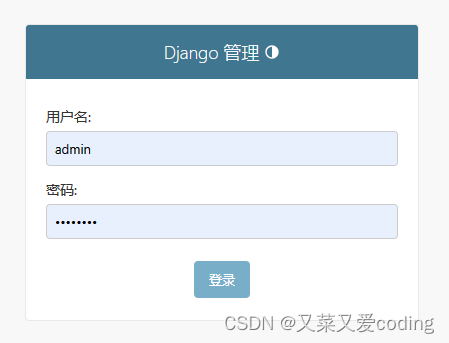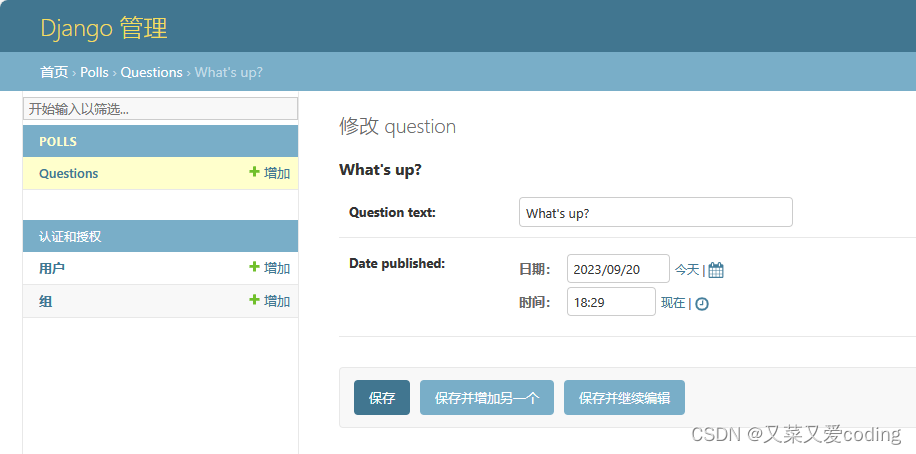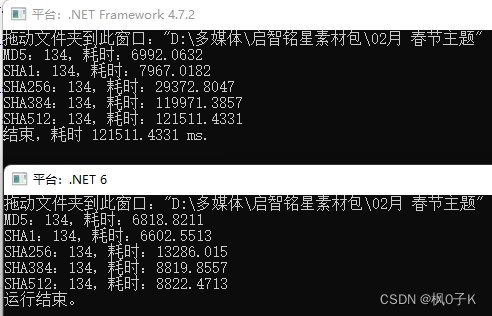官方有很详细的文档,但是看过几遍之后如果要翻找还是有点麻烦,本文算作是学习笔记,提取一些关键点记录下来,另附上官方教程 编写你的第一个 Django 应用
注: 文中的指令使用py,是在Windows上,macOS要使用 python3
1. 安装Django
Django 是一个基于 Python 的Web开发框架,安装前可以用下面的命令检查是否安装了 Django,如果已经安装,会显示版本,没有安装会提示没有该模块
py -m django --version如果没有安装,可以使用下面的命令安装
py -m pip install Django2. 创建项目
项目就是一个 project,一个项目可以包含多个 app,也可以理解为多个模块,创建项目使用如下命令,其中 mysite 是项目名称:
django-admin startproject mysite在令窗口中,切到刚刚创建的项目的根目录(有 manage.py),在项目中创建一个app,名字就叫 polls
py manage.py startapp polls然后修改几个文件
polls/views.py
from django.http import HttpResponse
def index(request):
return HttpResponse("Hello World!")polls/urls.py
from django.urls import path
from . import views
urlpatterns = [
path("", views.index, name="index"),
]mysite/urls.py
from django.contrib import admin
from django.urls import include, path
urlpatterns = [
path("polls/", include("polls.urls")),
path("admin/", admin.site.urls),
]最后启动服务,浏览器访问 http://localhost:8000/polls/
py manage.py runserver3. 配置语言和时区
项目配置在 mysite/settings.py
语言标识可以在这里查找 Language Identifiers (RFC 3066)
# 语言设置为中文
LANGUAGE_CODE = 'zh-Hans'时区标识可以在这里查找 List of tz database time zones
# 时区设置为北京时间
TIME_ZONE = 'Asia/Shanghai'4. 数据库
就使用自带的 SQLite 吧,方便又简单,如果开发商用的Web App,建议使用其他数据库,要进行额外的配置。
(1)创建数据模型
修改 polls/models.py
import datetime
from django.db import models
from django.utils import timezone
class Question(models.Model):
question_text = models.CharField(max_length=200)
pub_date = models.DateTimeField("date published")
def __str__(self):
return self.question_text
def was_published_recently(self):
return self.pub_date >= timezone.now() - datetime.timedelta(days=1)
class Choice(models.Model):
# Choice属于一个Question
question = models.ForeignKey(Question, on_delete=models.CASCADE)
choice_text = models.CharField(max_length=200)
votes = models.IntegerField(default=0)
def __str__(self):
return self.choice_text
(2)激活模型
修改 mysite/settings.py,在 INSTALLED_APP 中添加 polls.apps.PollsConfig
INSTALLED_APPS = [
"polls.apps.PollsConfig",
"django.contrib.admin",
"django.contrib.auth",
"django.contrib.contenttypes",
"django.contrib.sessions",
"django.contrib.messages",
"django.contrib.staticfiles",
](3)创建数据迁移(尚未提交)
py manage.py makemigrations polls查看创建的迁移使用的SQL语句,下面命令中的 0001 是上面创建迁移时生成的 polls/migrations/0001_initial.py 文件名中的数字
py manage.py sqlmigrate polls 0001(4)提交迁移
py manage.py migrate总结起来就三步:修改模型 -> 创建迁移 -> 提交迁移
(5)玩转数据库API
打开交互式窗口
py manage.py shell>>> from polls.models import Choice, Question >>> Question.objects.all() <QuerySet []> >>> from django.utils import timezone >>> q = Question(question_text="What's new?", pub_date=timezone.now()) >>> q.save() >>> q.id 1 >>> q.question_text "What's new?" >>> q.pub_date datetime.datetime(2012, 2, 26, 13, 0, 0, 775217, tzinfo=datetime.timezone.utc) >>> q.question_text = "What's up?" >>> q.save() >>> Question.objects.all() <QuerySet [<Question: Question object (1)>]>
>>> from polls.models import Choice, Question
>>> Question.objects.all()
<QuerySet [<Question: What's up?>]>
>>> Question.objects.filter(id=1)
<QuerySet [<Question: What's up?>]>
>>> Question.objects.filter(question_text__startswith="What")
<QuerySet [<Question: What's up?>]>
>>> from django.utils import timezone
>>> current_year = timezone.now().year
>>> Question.objects.get(pub_date__year=current_year)
<Question: What's up?>
>>> Question.objects.get(id=2)
Traceback (most recent call last):
...
DoesNotExist: Question matching query does not exist.
>>> Question.objects.get(pk=1)
<Question: What's up?>
>>> q = Question.objects.get(pk=1)
>>> q.was_published_recently()
True
>>> q = Question.objects.get(pk=1)
>>> q.choice_set.all()
<QuerySet []>
>>> q.choice_set.create(choice_text="Not much", votes=0)
<Choice: Not much>
>>> q.choice_set.create(choice_text="The sky", votes=0)
<Choice: The sky>
>>> c = q.choice_set.create(choice_text="Just hacking again", votes=0)
>>> c.question
<Question: What's up?>
>>> q.choice_set.all()
<QuerySet [<Choice: Not much>, <Choice: The sky>, <Choice: Just hacking again>]>
>>> q.choice_set.count()
3
>>> Choice.objects.filter(question__pub_date__year=current_year)
<QuerySet [<Choice: Not much>, <Choice: The sky>, <Choice: Just hacking again>]>
>>> c = q.choice_set.filter(choice_text__startswith="Just hacking")
>>> c.delete()
5. 创建管理员
输入下面的命令,然后根据提示设置账户名,邮箱,密码
py manage.py createsuperuser启动服务,浏览器访问 http://127.0.0.1:8000/admin/
py manage.py runserver
修改 polls/admin.py 让管理员可管理数据
from django.contrib import admin
from .models import Question
admin.site.register(Question)管理员登录后

6. 使用 html 模板
(1)创建 HTML 文件
在 polls/ 目录下新建一个 templates 文件夹,在 polls\templates\ 目录下新建一个 polls 文件见,如果新建一个 HTML 文件,比如 index.html,其最终的路径为 mysite\polls\templates\polls\index.html,代码中将使用 polls\index.html
polls\templates\polls\index.html
{% if latest_question_list %}
<ul>
{% for question in latest_question_list %}
<li><a href="{% url 'index' question.id %}">{{ question.question_text }}</a></li>
{% endfor %}
</ul>
{% else %}
<p>No polls are available.</p>
{% endif %}polls\templates\polls\detail.html
<h1>{{ question.question_text }}</h1>
<ul>
{% for choice in question.choice_set.all %}
<li>{{ choice.choice_text }}</li>
{% endfor %}
</ul>(2)配置 view
修改 polls/views.py
from django.http import HttpResponse
from django.shortcuts import render, get_object_or_404
from .models import Question
def index(request):
latest_question_list = Question.objects.order_by("-pub_date")[:5]
context = {"latest_question_list": latest_question_list}
return render(request, "polls/index.html", context)
def detail(request, question_id):
question = get_object_or_404(Question, pk=question_id)
context = {"question": question}
return render(request, "polls/detail.html", context)
def results(request, question_id):
return HttpResponse("Results")
def vote(request, question_id):
return HttpResponse("Vote")(3)配置 url
修改 polls/urls.py
from django.urls import path
from . import views
urlpatterns = [
# ex: /polls/
path("", views.index, name="index"),
# ex: /polls/5/
path("<int:question_id>/", views.detail, name="detail"),
# ex: /polls/5/results/
path("<int:question_id>/results/", views.results, name="results"),
# ex: /polls/5/vote/
path("<int:question_id>/vote/", views.vote, name="vote"),
](4)URL命名空间
当项目存在多个应用时,可能需要借助命名空间来确定url,在应用的 urls.py 中配置 app_name
from django.urls import path
from . import views
app_name = "polls"
urlpatterns = [
# ex: /polls/
path("", views.index, name="index"),
# ex: /polls/5/
path("<int:question_id>/", views.detail, name="detail"),
# ex: /polls/5/results/
path("<int:question_id>/results/", views.results, name="results"),
# ex: /polls/5/vote/
path("<int:question_id>/vote/", views.vote, name="vote"),
]index.html 中添加 app_name:
{% if latest_question_list %}
<ul>
{% for question in latest_question_list %}
<li><a href="{% url 'polls:index' question.id %}">{{ question.question_text }}</a></li>
{% endfor %}
</ul>
{% else %}
<p>No polls are available.</p>
{% endif %}(5)创建表单
修改 detail.html
<form action="{% url 'polls:vote' question.id %}" method="post">
{% csrf_token %}
<fieldset>
<legend><h1>{{ question.question_text }}</h1></legend>
{% if error_message %}<p><strong>{{ error_message }}</strong></p>{% endif %}
{% for choice in question.choice_set.all %}
<input type="radio" name="choice" id="choice{{ forloop.counter }}" value="{{ choice.id }}">
<label for="choice{{ forloop.counter }}">{{ choice.choice_text }}</label><br>
{% endfor %}
</fieldset>
<input type="submit" value="Vote">
</form>表单中涉及投票页面和投票结果页面,得新增一个 results.html,并修改 views.py
results.html
<h1>{{ question.question_text }}</h1>
<ul>
{% for choice in question.choice_set.all %}
<li>{{ choice.choice_text }} -- {{ choice.votes }} vote{{ choice.votes|pluralize }}</li>
{% endfor %}
</ul>
<a href="{% url 'polls:detail' question.id %}">Vote again?</a>views.py 中修改 results 和 vote 方法
from django.http import HttpResponse, HttpResponseRedirect
from django.shortcuts import render, get_object_or_404
from django.urls import reverse
from .models import Question, Choice
def index(request):
latest_question_list = Question.objects.order_by("-pub_date")[:5]
context = {"latest_question_list": latest_question_list}
return render(request, "polls/index.html", context)
def detail(request, question_id):
question = get_object_or_404(Question, pk=question_id)
context = {"question": question}
return render(request, "polls/detail.html", context)
def results(request, question_id):
question = get_object_or_404(Question, pk=question_id)
return render(request, "polls/results.html", {"question": question})
def vote(request, question_id):
question = get_object_or_404(Question, pk=question_id)
try:
selected_choice = question.choice_set.get(pk=request.POST["choice"])
except (KeyError, Choice.DoesNotExist):
return render(
request,
"polls/detail.html",
{
"question": question,
"error_message": "You didn't select a choice."
},
)
else:
selected_choice.votes += 1
selected_choice.save()
return HttpResponseRedirect(reverse("polls:results", args=(question.id,)))7. 编写测试用例
首先得有个bug,巧了,我们的 polls 应用现在就有一个小 bug 需要被修复:我们的要求是如果 Question 是在一天之内发布的, Question.was_published_recently() 方法将会返回 True ,然而现在这个方法在 Question 的 pub_date 字段比当前时间还晚时也会返回 True(这是个 Bug)。
在 polls\tests.py 中编写测试代码文章来源:https://uudwc.com/A/Oq6O2
import datetime
from django.test import TestCase
from django.utils import timezone
from .models import Question
class QuestionModelTests(TestCase):
def test_was_published_recently_with_future_question(self):
"""
检测异常:发布时间比当前时间还要晚
"""
time = timezone.now() + datetime.timedelta(days=30)
future_question = Question(pub_date=time)
self.assertIs(future_question.was_published_recently(), False)运行测试(指令是在项目跟目录执行的,该目录有 manage.py)文章来源地址https://uudwc.com/A/Oq6O2
py manage.py test polls-
py manage.py test polls将会寻找polls应用里的测试代码 - 查找 django.test.TestCase 子类
- 创建一个特殊的数据库供测试使用
- 在类中寻找测试方法——以
test开头的方法。

